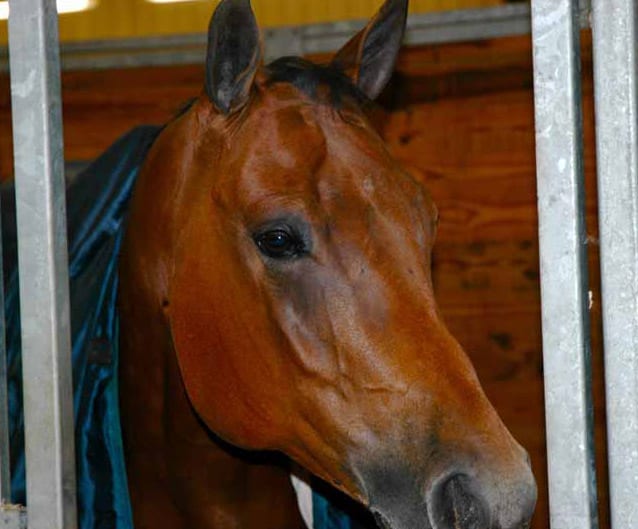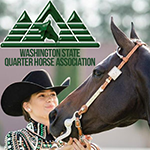Like many of you, I have to work for a living, and sometimes that involves being on the road for weeks at a time. I am currently in the UK, in a town spelled Derby, but pronounced Darby, where jumpers aren’t horses who go over fences, they are sweaters, and the word shag has nothing to do with a type of carpet that was popular in the late 70’s. One thing that is important to keep in mind is that being on the road and away from your horse doesn’t mean that you can’t improve your riding skills.
Here are some tips that you can use whilst (isn’t this a great word) traveling to improve your performance when you get back in the saddle again.
Upper Body Posture
If your natural body carriage resembles Igor from Young Frankenstein, chances are you are not going to look like a runway model when you sit on your horse. Being mindful of keeping your shoulders square, eyes up and back straight no matter where you are will help your become a natural, graceful rider. Try standing in front of a mirror as if you were sitting on your horse with holding your reins. As you face the mirror, make sure that your hips and shoulders are square. How is your head position? Where are your eyes looking? Do you have a pleasant look on your face? Do you look confident? Make all the adjustments that you need to make and then do the same check from the side. Close your eyes and memorize how your muscles feel when your upper body is as it should be, then open your eyes and take another look. Repeat this a few times, and then move around a bit. Stand in front of the mirror again, and close your eyes. Put your body into the correct position and then open your eyes and check your alignment.
By now you should know exactly how to get yourself in the correct position at will. Throughout the day, practice getting into your ideal position and maintain that position for several minutes at a time. If you are walking around, you can just let your arms hang naturally instead of holding your imaginary reins, which will allow you to avoid any raised eyebrows from people on the street. Once you begin riding again, you may be pleasantly surprised how much easier it is to maintain your correct body position when riding.
Peripheral Vision
Many athletes and people in general suffer from negative self -talk. You may be familiar with that little voice in your head that talks a lot, but does not offer much in the way of good advice or motivational speeches. People spend a lot of time and money attempting to change their negative self –talk, and quite frankly, it is very difficult to do. Instead of changing the message, wouldn’t it be nice if you could quiet the voice, get out of your own way and perform at your best? Guess What? By riding in peripheral vision, or what Sally Swift calls Soft Eyes, not only will you be able to quiet your mind, you will be in riding from your horse’s point of view because that is how they see the world.
In order to practice getting into peripheral vision, you want to look at a spot on a wall in front of you, about 2 inches above eye level. As you look at the point on the wall, really study it. Focus in and notice all the little details like the color, texture and maybe the fact that you need to repaint the wall. Go ahead and take a few deep breaths and feel your muscles relax as you breathe deeply, allowing your eyes to relax and soften. Then take your hands and hold them as if you were holding your reins. Keeping your gaze on the spot, notice that you see your hands without having to look down. Slowly begin to move your hands apart as until they move out of your field of vision.
Keep your awareness expanded out to sides of the room, and include the space above your head, and below your feet. Just spend a few minutes in this expanded awareness and then go back to foveal vision.
When you were in peripheral vision, what did you notice? Did your breathing change? Perhaps you felt it getting slower and a bit deeper. Did feel more relaxed? Maybe you thought things slowed down a bit, and got a little quieter. If you still feel like you have some inner chatter going on, try relaxing your tongue. In peripheral vision, your body and brain react differently than they do when in our typical foveal, or tunnel vision. This is because foveal vision is attached to the Sympathetic nervous system- think fight or flight. Peripheral vision activates our Parasympathetic Nervous System, associated with a relaxed alertness,
which is the feeling people have when they describe what it is like to be ‘in the zone’.
Being a master of moving in and out of peripheral vision takes some practice, but it is worth the effort. This is something that I practice several times a day, especially when confronted with a stressful situation. Instead of hearing the blah, blah, blah of my inner critic and feeling anxious, I can choose to enter a peak performance state in the blink of an eye. I use these techniques all the time, especially when I am unable to ride. They keep me motivated, because I am not focusing on the fact that I can’t ride; I am focusing on the things that make me a better rider. I encourage you to try them out for yourself; and who knows, you may discover that, as they say in the UK, are the Bee’s Knees!
Kirsten Farris is a Certified Sport Consultant, Certified Equestrian Fitness Trainer, and the Author of The Workbook for the Equestrian Athlete- A Guide to Showring Success. For more information contact her at: kirsten@equestrianathlete.com © 2010








